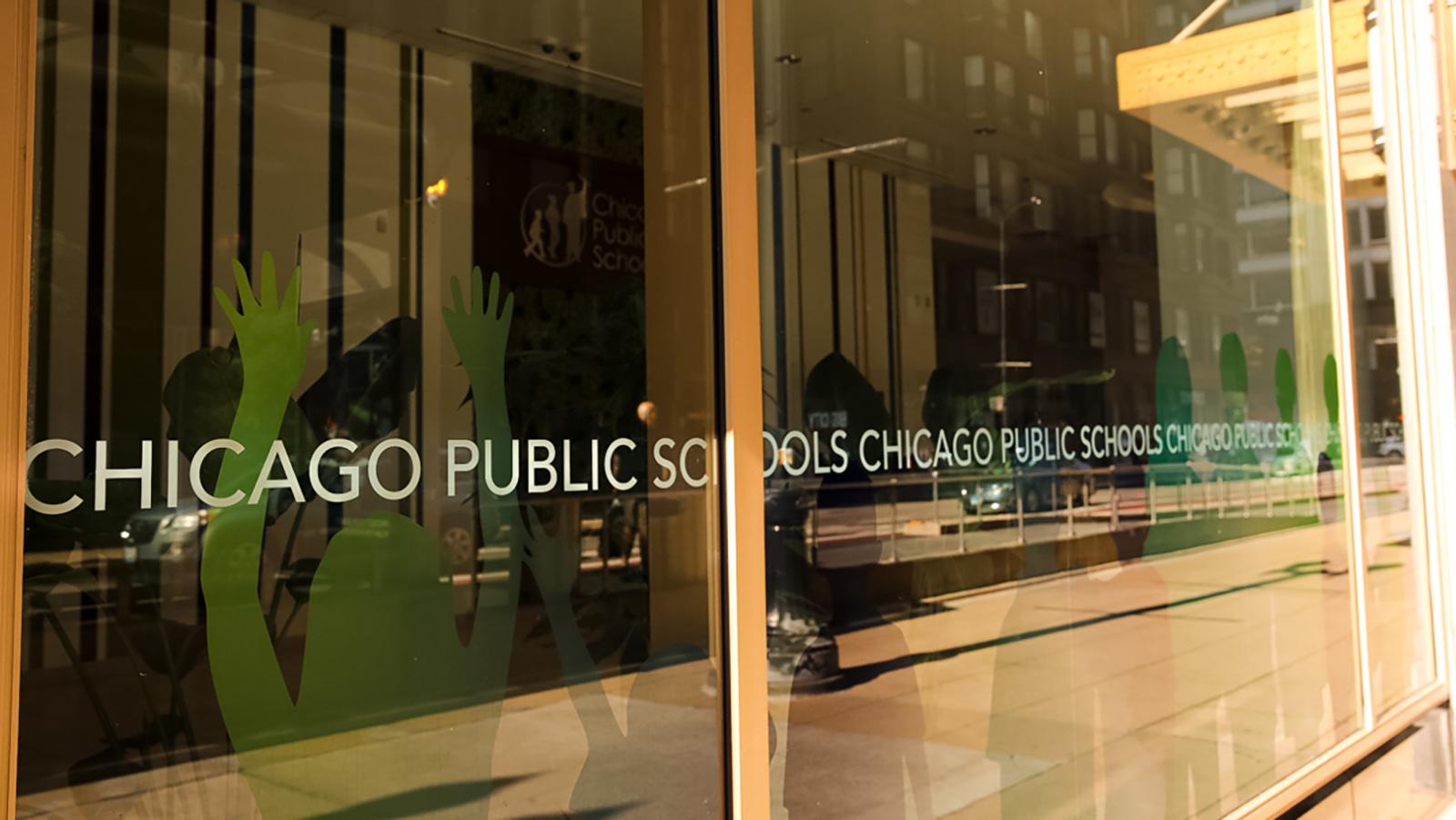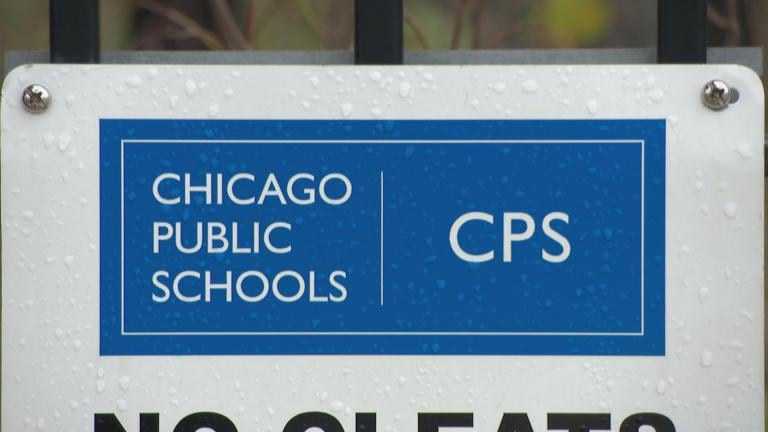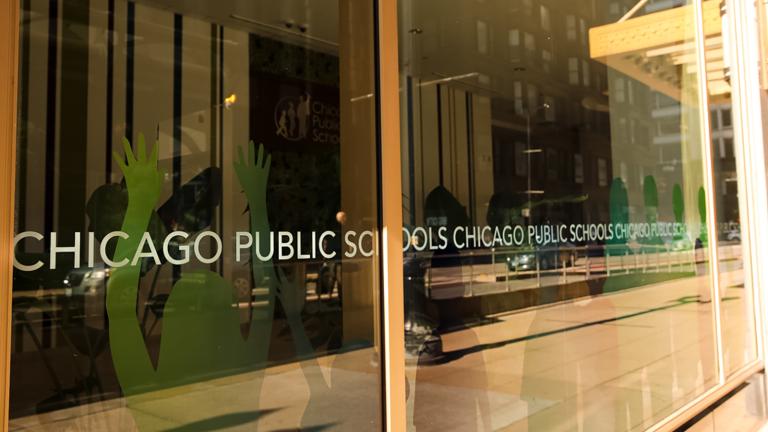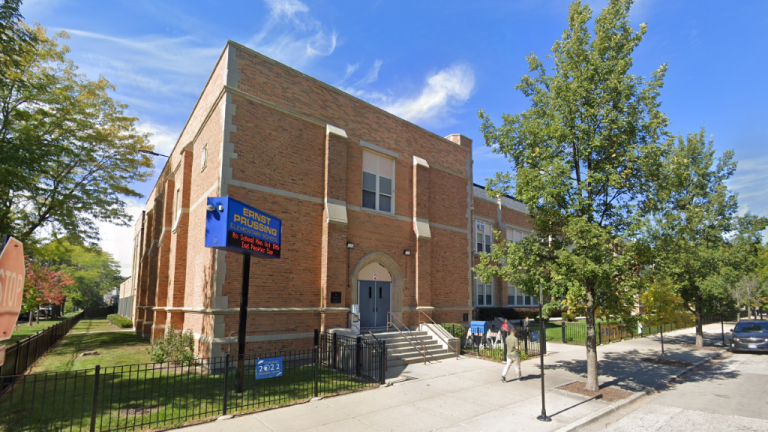 Chicago Public Schools headquarters. (Michael Izquierdo / WTTW News)
Chicago Public Schools headquarters. (Michael Izquierdo / WTTW News)
Even though it only took Gov. J.B. Pritzker 11 days to sign a law finalizing Chicago’s transition to an elected school board, candidates hoping to run for a position in November’s election still have little time to organize.
Tuesday marks the first day board of education candidates can begin to gather the minimum 1,000 signatures they need from neighbors in order to make it on the ballot.
Prospective school board candidates have about three months to get the job done. The petition period closes June 24, though petitions can be filed starting June 17.
“This is a big position, it’s an important position, and I think you want to make sure the person’s willing to put the effort in to get on the ballot,” said state Rep. Ann Williams, a Democrat who represents parts of Chicago’s Northwest Side. “It’s an important office with big decision-making power.”
But critics say asking residents to get thousands of signatures in a matter of months is too onerous, especially for anyone without a political sponsor.
Previous versions of enabling legislation would have required far fewer signatures — either 250 or 500 — to make it on the ballot.
In a letter to Pritzker earlier this month, leaders of the organization Illinois African Americans for Equitable Redistricting said 500 signatures would have been the sweet spot that “provides ballot access to most candidates, while ensuring that we attract people who are serious about serving on the Chicago Elected Representative School Board.”
The 1,000-signature requirement is too high, the group wrote, defeating the purpose of providing “a mechanism for parents to have a real voice in the education of their children.”
“Obviously, candidates with access to money and an organized political apparatus would have no problem meeting these requirements,” the letter reads. “However, the average parent or typical resident might find these requirements to be onerous, if not prohibitive.”
Austin resident Dwayne Truss, who was appointed to the CPS board of education by former Mayor Lori Lightfoot in 2019 then pushed out by her in 2022, said the compressed timeline and signature requirement are a form of “candidate suppression.”
Truss said candidates will have to get 3,000 signatures, the maximum allowed, because in tight contests, an opposing team can eliminate the opposition before the race even begins by challenging the validity of signatures. If enough signatures are dismissed and the total falls below the 1,000 minimum threshold, a candidate can be knocked off the ballot.
“Asking them to collect 3,000 signatures — that’s really what you have to do, because you’re going to get challenged in Chicago,” Truss said.
Williams also said the signature requirement was chosen because it roughly matches the process for Democrats and Republicans running for the state legislature.
She said the thinking is that elected members will represent about 240,000 residents from 10 large districts for the next two years, when the board is half appointed and half elected. That’s on par with the roughly 216,000 to 218,000 constituents that state senators represent, which is why Williams said that for the 2024 election cycle, school board candidates must collect the same number of signatures as established party senate candidates.
For the next election, in 2026, CPS board candidates need only 500 to 1,500 signatures.
The 2026 election is also when the CPS board will move to a fully-elected body.
Members then will be chosen from 20 smaller sub-districts. With the district size halved, Williams said, the signature requirement will be too.
That matches the 500 minimum requirement that Democrats and Republicans running for the Illinois House must submit on their petitions. (House districts are roughly half the size of Senate ones).
Various Chicago community groups criticize the multi-pronged framework as too convoluted, but Williams said it was the best way to ensure that all of Chicago gets to vote for a school board representative “on Day 1” while still allowing time for an orderly transition.
“It’s not going to be perfect but it’s going to be democracy and that’s the most important thing to keep in mind,” Williams said.
The Chicago Teachers Union, a key ally of Mayor Brandon Johnson, was a big player in fighting for the hybrid board, which gives Johnson majority control of CPS through his first term.
Ald. Gilbert Villegas (36th Ward) told senators the signature provisions will benefit the CTU and its political action committee, or PAC.
“This doesn’t benefit the community that’s been asking for a fully selected school board,” Villegas said. “The number of signatures required favors a group like the CTU PAC that has the infrastructure to mass collect signatures, a well-funded group with personnel, as opposed to everyday parents and real community activists.”
The CTU did not have an immediate response to WTTW News on Tuesday.
Board members are not paid for their service, and are expected to spend at least 25 to 30 hours per month working on board-related responsibilities, such as: establishing the direction, goals, and priorities for Chicago Public Schools; approving district policies, purchasing decisions and contracts; approving the district’s spending plans; and signing off on the school year calendar.
“Governing this organization is a tremendous responsibility for the Board Members selected to lead,” the board said in a statement on its website, noting that it oversees a school district that serves some 325,000 students across 634 schools.
Contact Amanda Vinicky: @AmandaVinicky | [email protected]







